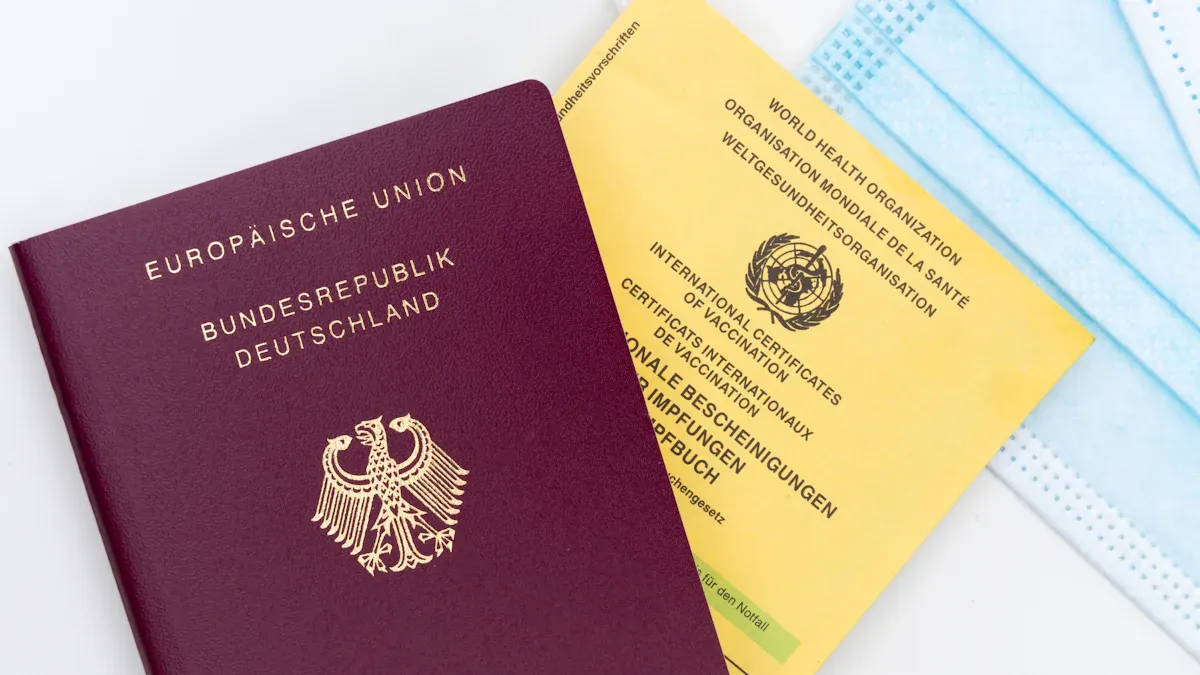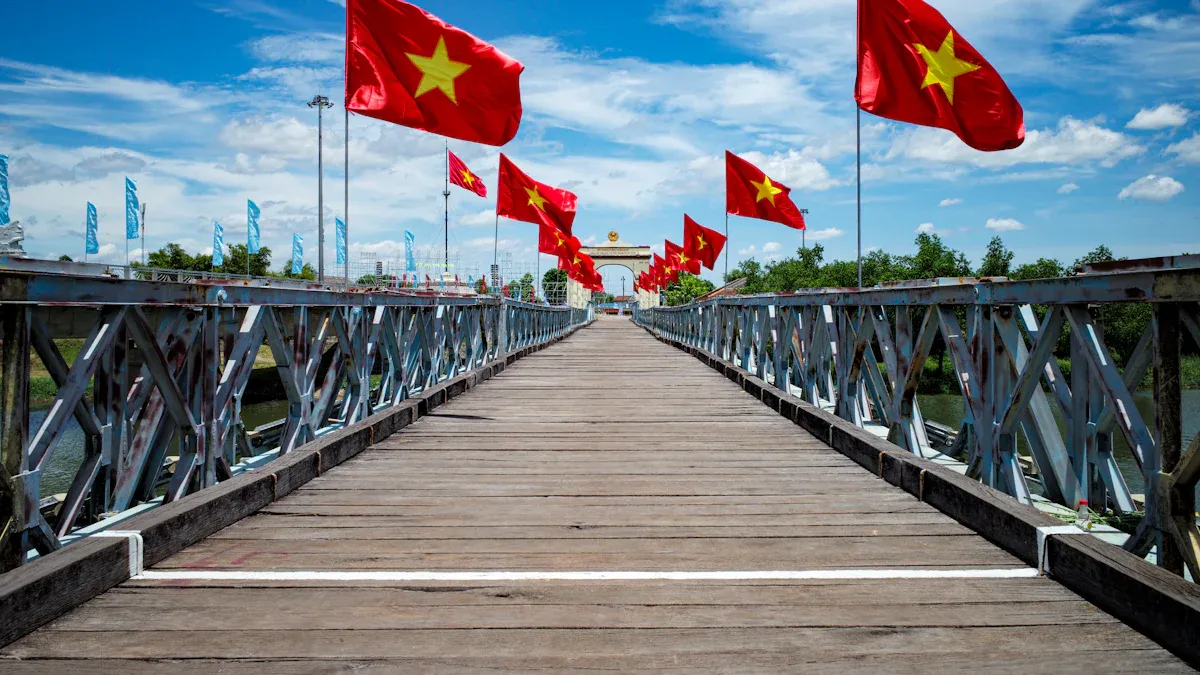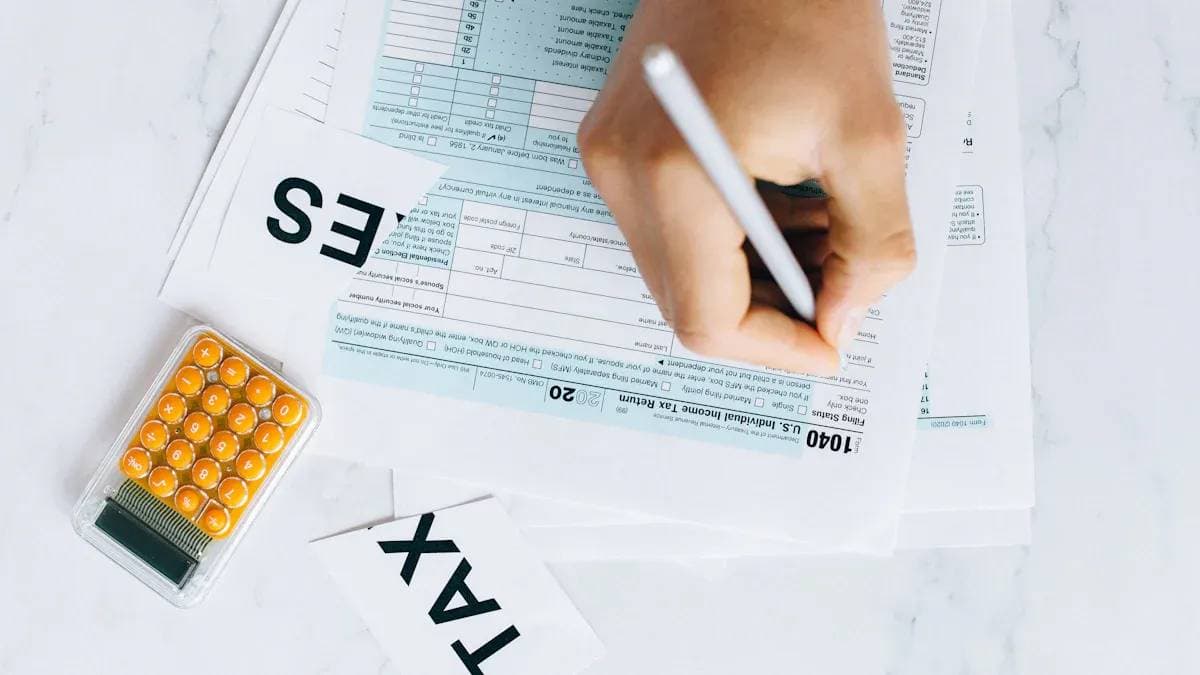- EasyCard
- Trade
- Help
- Announcement
- Academy
- SWIFT Code
- Iban Number
- Referral
- Customer Service
- Blog
- Creator
Vietnam Visa Application: Do You Need a Visa for Vietnam? How to Apply for a Vietnam Visa?

Image Source: unsplash
When planning to travel to Vietnam, whether you need a visa depends on your passport type and region. Mainland Chinese passport holders must apply for a Vietnam visa in advance, and Hong Kong, Macao, and Taiwan passport holders should also note relevant policies. Some Southeast Asian countries (e.g., Singapore, Thailand) enjoy visa-free entry, while European and American passport holders often need to apply for an electronic visa or visa on arrival. Visa policies for different passport types in Vietnam vary significantly:
| Passport Type | Visa Policy Description |
|---|---|
| Ordinary Passport | Visa required, no visa-free entry; eligible for visa on arrival under certain conditions. |
| Diplomatic Passport | Visa-free entry, stay up to 90 days. |
| Official Passport | Visa-free entry, stay up to 90 days. |
| Ordinary Official Passport | Visa-free entry, stay up to 90 days. |
If you stay longer than 90 days or engage in work, study, or other activities, you need to apply for a visa in advance.
Key Highlights
- Different passport types determine whether you need to apply for a Vietnam visa; ordinary passports require a visa, while diplomatic and official passports allow visa-free entry.
- The electronic visa application is simple and fast, suitable for most tourists, with online document submission and a $25 fee, typically approved within 3 days.
- Visa on arrival requires pre-approval, processed at the airport, suitable for urgent travel, but documents must be fully prepared to avoid rejection.
- Your passport must be valid for at least 6 months, and photos and application forms must meet official requirements; incomplete documents may lead to rejection.
- Phu Quoc Island offers a 30-day visa-free policy, but you cannot use this exemption to travel to other parts of Vietnam; transit generally does not require a visa.
Do You Need a Visa?

Image Source: pexels
Mainland Chinese Passport
If you hold a mainland Chinese ordinary passport, you need to apply for a visa in advance to travel to Vietnam. You cannot enter visa-free. You can choose an electronic visa, visa on arrival, or apply at a Vietnam embassy or consulate in China.
If you hold a diplomatic passport, official passport, or ordinary official passport, you can enter Vietnam visa-free for up to 90 days. You need to note that the visa-free policy applies only to official or diplomatic activities. If you plan to travel for tourism, family visits, or other personal purposes, you still need to apply for an ordinary visa.
When preparing your Vietnam visa application, it’s recommended to check the latest policies in advance to avoid itinerary disruptions due to incomplete documents or policy changes.
Hong Kong, Macao, and Taiwan Passports
If you hold a Hong Kong or Macao Special Administrative Region passport, you can enter Vietnam visa-free for up to 14 days. You need to have a return ticket or a ticket to a third country. If you plan to stay longer than 14 days or make multiple entries, you need to apply for a visa in advance.
If you hold a Taiwan passport, you cannot enter Vietnam visa-free. You can apply for a Vietnam visa through the electronic visa system. You can also opt for a visa on arrival, but you need to obtain pre-approval from the Vietnam Immigration Department. When applying for a Vietnam visa, you need to prepare a valid passport, photos, and other documents.
Other Countries/Regions
If you come from certain Southeast Asian countries, such as Singapore, Thailand, Malaysia, Indonesia, or the Philippines, you can enter Vietnam visa-free for 14-30 days. If you come from Japan, South Korea, or Russia, you can also enjoy a 15-day visa-free policy.
If you hold a passport from European or American countries, such as the US, Canada, UK, or Australia, you need to apply for a visa in advance. You can choose an electronic visa or visa on arrival. When applying, you need to prepare a valid passport, photos, and related documents.
If you come from Africa, the Middle East, or other regions, you usually need to apply for a visa in advance. It’s recommended to complete your Vietnam visa application through a Vietnam embassy/consulate or the electronic visa system.
Visa-Free and Visa-on-Arrival Policies
If you come from a country with a visa-free policy, you can enter Vietnam directly without applying for a visa in advance. You need to note the visa-free stay duration, and exceeding the allowed days requires a visa extension.
If you qualify for the visa-on-arrival policy, you can obtain a visa upon arrival at Vietnam’s major international airports. You need to obtain pre-approval from the Vietnam Immigration Department in advance and prepare your passport, photos, and visa-on-arrival application form.
You need to note that the visa-on-arrival policy mainly applies to short-term visits for tourism or business. If you plan to stay long-term, work, or study, you need to apply for the appropriate visa type in advance.
Friendly Reminder: Since August 15, 2023, the electronic visa is open to all countries and regions. You can apply online through the Vietnam Immigration Department’s official website, with a simple process suitable for most tourists and business travelers.
Visa Types
Electronic Visa (eVisa)
You can choose the electronic visa method for your Vietnam visa application. The electronic visa is suitable for tourists and business travelers from most countries and regions. You only need to submit your application on the Vietnam Immigration Department’s official website, upload your passport’s main page and a photo, and pay a $25 visa fee (approximately 1 USD = 7.2 CNY). The electronic visa is valid for 30 days with a single entry. You can receive the approval result within 48 hours. The electronic visa process is simple, ideal for short-term tourism and business visits.
Note: Since August 15, 2023, the electronic visa is open to all countries and regions.
Visa on Arrival
If you plan to enter through Vietnam’s major international airports, you can choose a visa on arrival. You need to obtain pre-approval from the Vietnam Immigration Department through a travel agency or service provider in advance. Upon arrival at the airport, submit the approval letter, passport, photos, and application form, and pay the visa-on-arrival fee (typically $25-$50). The visa on arrival is suitable for urgent travel or situations where you cannot apply for a visa in advance.
The visa on arrival is processed quickly but involves more procedures, so it’s recommended to prepare all documents in advance.
Embassy/Consulate Visa
You can also apply for a visa at a Vietnam embassy or consulate in China or other countries. You need to submit your passport, photos, application form, and related documents. The embassy/consulate visa is suitable for long-term stays, work, study, or multiple-entry needs. The processing time is generally 3-5 working days, with fees ranging from $30-$100 depending on the visa type. The embassy/consulate visa is secure and reliable, suitable for those needing multiple entries or long-term stays.
Other Special Visas
If you plan to visit Phu Quoc Island, you can benefit from the Phu Quoc visa-free policy. With a valid passport and return ticket, you can stay visa-free on Phu Quoc Island for up to 30 days. If you have relatives in Vietnam, you can apply for a 5-year visa exemption for family visits or long-term stays. You need to prepare proof of family relationships and related documents.
Special visa policies have limited applicability, so it’s recommended to consult official channels in advance.
Vietnam Visa Application Process

Image Source: pexels
Electronic Visa Application
You can apply for an electronic visa online through the Vietnam Immigration Department’s official website. Since August 15, 2023, Vietnam’s electronic visa policy has undergone significant changes. Now, citizens of all countries and regions can apply for an electronic visa. The validity of the electronic visa has been extended from 30 days to 90 days, and visa-free stay for citizens of exempt countries has been extended from 15 days to 45 days. This policy greatly facilitates international tourists and business travelers, promoting tourism development.
When applying for an electronic visa, you need to follow these steps:
- Log in to the Vietnam Immigration Department’s official website and select the electronic visa application portal.
- Upload an electronic copy of your passport’s main page and a compliant photo (35mm x 45mm, white background, photo placed in the blank space of the passport information page).
- Fill in personal information, including name, date of birth, passport number, port of entry, etc.
- Pay the visa fee online ($25, approximately 1 USD = 7.2 CNY).
- After submitting the application, you can typically receive the approval result within 3 working days. You can check the progress and download the electronic visa on the website.
- Print the electronic visa and carry it with you, presenting it to immigration officers upon entry.
Tip: The electronic visa is suitable for short-term tourism and business visits. You need to ensure your passport is valid for at least 6 months.
Visa on Arrival Process
If you choose a visa on arrival, you need to obtain pre-approval from the Vietnam Immigration Department in advance. You can apply through a travel agency or visa service provider. The process is as follows:
- Submit a visa-on-arrival application online or through an agency, uploading a scanned copy of your passport and a photo.
- Obtain the approval letter from the Vietnam Immigration Department (typically 3-5 working days).
- Bring the approval letter, original passport, two photos (35mm x 45mm, white background), and visa-on-arrival application form to Vietnam’s major international airports.
- Submit documents at the visa-on-arrival counter and fill out an entry card.
- Pay the visa-on-arrival fee ($25-$50, approximately 1 USD = 7.2 CNY).
- Receive the visa and enter the country.
Note: The visa on arrival is suitable for short-term tourism or business visits. You need to prepare all documents in advance to avoid entry denial due to incomplete documents.
Embassy/Consulate Visa Process
You can also apply for a visa at a Vietnam embassy or consulate in China or other countries. This method is suitable for long-term stays, work, study, or multiple-entry needs. The application process is as follows:
- Visit the nearest Vietnam embassy or consulate to obtain and fill out a visa application form.
- Submit the original passport, photos (35mm x 45mm, white background), visa application form, and related documents (e.g., invitation letter, approval letter).
- Pay the visa fee ($30-$100, approximately 1 USD = 7.2 CNY), with the exact amount depending on the visa type and stay duration.
- Wait for the review, typically 3-5 working days, to collect the visa.
- Collect the visa and travel to Vietnam as planned.
Recommendation: Before applying, you can call the embassy/consulate to confirm required documents and processing times to avoid delays due to incomplete documents.
Required Documents
During the Vietnam visa application process, you need to prepare the following common documents. Requirements may vary slightly depending on the visa type, so prepare according to your specific needs:
- Original passport (valid for at least 6 months) and an electronic copy of the passport’s main page.
- Compliant photos (35mm x 45mm, white background, placed in the blank space of the passport information page).
- Completed visa application form.
- Electronic visas require uploading the passport and photo; visas on arrival require carrying the Vietnam Immigration Department’s approval letter.
- Business visas require a business approval letter, including company information and visit purpose.
- If carrying large amounts of foreign currency, you need to fill out a foreign currency declaration form, specifying the amount.
- You need to fill out a customs declaration form and entry/exit card, with some ports requiring bilingual (Chinese and English) forms.
- Personal information forms and passport scans must follow official templates.
Friendly Reminder: All documents have official templates available for download. You need to carefully read the filling instructions to ensure the format and content meet requirements. Non-compliant documents may lead to visa rejection.
Fees and Processing Times
Visa Fees by Type
When applying for a Vietnam visa, you need to understand the fees for different visa types. The electronic visa (eVisa) costs $25 (approximately 1 USD = 7.2 CNY), suitable for short-term tourism and business visits. Visa-on-arrival fees typically range from $25 to $50, depending on the visa type and stay duration. If you apply for a visa at a Vietnam embassy or consulate in China, fees generally range from $30 to $100. Fees for multiple-entry or long-term visas are higher. When paying, some embassies/consulates accept cash, credit cards, or transfers through Hong Kong banks. It’s recommended to prepare USD cash in advance to avoid delays due to limited payment methods.
Processing Times
When applying for a Vietnam visa, you typically need to wait 3 working days. Electronic visas and embassy/consulate visas have a straightforward process. You only need to prepare documents and submit the application, and you can collect your passport and visa after 3 working days. The approval letter for a visa on arrival also takes 3 to 5 working days to obtain. In some cases, you can choose expedited services, but official expedited processing times are not specified. If you need expedited processing, it’s recommended to consult relevant agencies in advance to ensure a smooth itinerary.
Rejection and Remedies
When applying for a Vietnam visa, you may face rejection if documents are incomplete or information is incorrect. If rejected, you can supplement documents or correct information based on feedback from the embassy/consulate or Immigration Department and resubmit the application. You need to carefully verify the passport validity, photo specifications, and application form content. If you have special circumstances, you can seek assistance from professional agencies to increase approval chances. During the remedy process, maintain communication with official channels to stay updated on the latest policies and application progress.
Special Circumstances
Transit and Layovers
If you are transiting through a Vietnam airport to a third country, you generally do not need a Vietnam visa. When staying in the international transit area without leaving the airport customs, you can transit visa-free. You need to note that some airports may require you to hold a boarding pass and valid visa for the next flight. It’s recommended to confirm flight arrangements in advance to avoid itinerary disruptions due to policy changes. If you need to leave the airport or stay in Vietnam for more than 24 hours, you must apply for the appropriate visa.
Tip: When transiting, carry all travel documents, including passport, tickets, and visa approval letters, for possible inspections.
Phu Quoc Island Visa-Free
When planning to visit Phu Quoc Island, you can benefit from the visa-free policy. With a valid passport and return ticket, you can stay visa-free on Phu Quoc Island for up to 30 days without applying for a Vietnam visa in advance. You only need to present relevant documents to immigration officers upon entry. If you plan to travel from Phu Quoc Island to other parts of Vietnam, you must apply for a Vietnam visa in advance. The Phu Quoc visa-free policy is suitable for short-term tourism and leisure vacations.
| Visa-Free Eligibility | Stay Duration | Required Documents |
|---|---|---|
| All passport holders | 30 days | Passport, return ticket |
Passport Validity Requirements
When applying for a Vietnam visa, your passport must be valid for at least 6 months. If your passport is nearing expiration, it’s recommended to renew it in advance. Upon entry, immigration officers will check your passport’s validity. If the validity is insufficient, you may be denied entry. You also need to ensure your passport has enough blank pages for the visa and entry stamps.
Note: Before applying for a visa, carefully verify your passport information to avoid itinerary disruptions due to insufficient validity.
Minors and Groups
If you are a minor, applying for a Vietnam visa requires a birth certificate and a consent letter from parents or guardians. Upon entry, immigration officers may request verification of related documents. If you are traveling as a group, you can apply for visas collectively through a travel agency. Group visas are suitable for schools, companies, or tour groups. You need to prepare a group list, passport copies, and responsible person’s information. The group visa process is relatively simple, with fees typically calculated per person at about $25 (1 USD = 7.2 CNY).
Recommendation: For group travel, communicate with the travel agency in advance to ensure all members’ documents are complete to avoid delays due to missing individual documents.
When applying for a Vietnam visa, it’s recommended to follow these key steps:
- Prepare a valid passport (at least 6 months validity, 2 blank pages), printed approval letter, round-trip tickets, and hotel booking confirmations.
- For on-site processing, arrive at the airport 2 hours in advance and follow counter instructions to complete review, payment, and information collection.
- Pay the visa fee in cash, preparing $25-$50 (1 USD = 7.2 CNY), with smaller USD denominations being more convenient.
You should closely monitor policy changes and print the electronic approval letter 3 days in advance to avoid itinerary disruptions due to incomplete or expired documents. If you have questions, contact the Vietnam Immigration Department or consult professional agencies to ensure smooth entry.
FAQ
Can an electronic visa be used for multiple entries to Vietnam?
Since August 15, 2023, you can apply for a multiple-entry electronic visa. It is valid for up to 90 days. You need to select the multiple-entry option on the Vietnam Immigration Department’s website.
Can I pay the visa fee through a Hong Kong bank?
When applying for a visa at some Vietnam embassies/consulates in China, you can pay the fee via Hong Kong bank transfer. You need to consult the embassy/consulate in advance to confirm specific payment methods.
Can I get a refund if my Vietnam visa is rejected?
The visa fee (e.g., $25, 1 USD = 7.2 CNY) is generally non-refundable. You need to supplement documents and reapply, paying the fee again.
Can I apply for a visa if my passport is valid for less than six months?
If your passport is valid for less than six months, you cannot apply for a Vietnam visa. You need to renew your passport first before submitting the visa application.
Can I travel directly to other Vietnamese cities with the Phu Quoc visa-free entry?
If you enter Phu Quoc visa-free, you cannot travel directly to other Vietnamese cities. If you need to visit other regions, you must apply for a Vietnam visa in advance.
While planning your trip to Vietnam, applying for a visa is just the first step. Handling various travel expenses efficiently and affordably is equally important. Traditional bank transfers for visa fees or hotel bookings often come with high transaction fees and non-transparent exchange rates. To tackle these issues, consider a more modern financial platform. BiyaPay offers remittance with fees as low as 0.5% and supports same-day transfers, allowing you to quickly convert HKD, USD, or cryptocurrencies to other fiat currencies to cover visa fees and booking services. The platform also supports conversions between various fiat currencies and cryptocurrencies, giving you flexible options for managing your funds. Go to register now and use its powerful real-time exchange rate lookup tool to get the best rates for your transactions, making your journey to Vietnam seamless and worry-free.
*This article is provided for general information purposes and does not constitute legal, tax or other professional advice from BiyaPay or its subsidiaries and its affiliates, and it is not intended as a substitute for obtaining advice from a financial advisor or any other professional.
We make no representations, warranties or warranties, express or implied, as to the accuracy, completeness or timeliness of the contents of this publication.




Contact Us
Company and Team
BiyaPay Products
Customer Services
is a broker-dealer registered with the U.S. Securities and Exchange Commission (SEC) (No.: 802-127417), member of the Financial Industry Regulatory Authority (FINRA) (CRD: 325027), member of the Securities Investor Protection Corporation (SIPC), and regulated by FINRA and SEC.
registered with the US Financial Crimes Enforcement Network (FinCEN), as a Money Services Business (MSB), registration number: 31000218637349, and regulated by FinCEN.
registered as Financial Service Provider (FSP number: FSP1007221) in New Zealand, and is a member of the Financial Dispute Resolution Scheme, a New Zealand independent dispute resolution service provider.




















